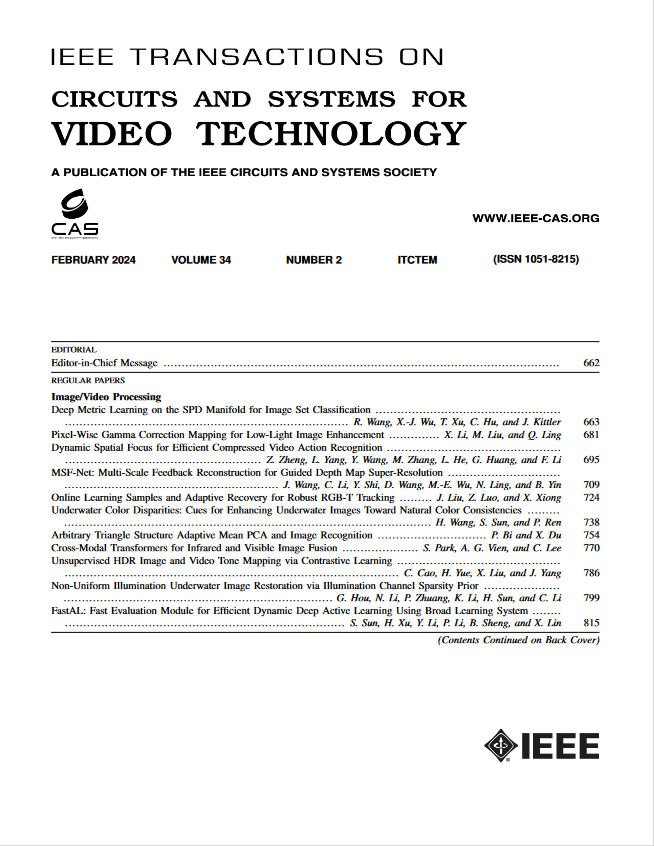SAM-COD+: sam制导的弱监督伪装目标检测统一框架
IF 8.3
1区 工程技术
Q1 ENGINEERING, ELECTRICAL & ELECTRONIC
IEEE Transactions on Circuits and Systems for Video Technology
Pub Date : 2024-12-11
DOI:10.1109/TCSVT.2024.3514713
引用次数: 0
摘要
大多数伪装目标检测(COD)方法严重依赖于掩码注释,这些方法的获取耗时且费力。与完全监督的方法相比,现有的弱监督COD方法表现出明显较差的性能,并且难以同时支持所有现有类型的伪装对象标签,包括涂鸦、边界框和点。即使对于分段任意模型(SAM)来说,处理弱监督的COD仍然存在问题,它通常会遇到潦草标签的快速兼容性、极端响应、语义错误响应和不稳定的特征表示等挑战,在伪装场景中产生不满意的结果。为了缓解这些问题,本文提出了一个统一的COD框架,称为SAM-COD,它能够支持任意弱监督标签。我们的SAM- cod使用一个提示适配器来处理基于SAM的涂鸦提示。同时,我们引入了响应过滤器和语义匹配模块,以提高在COD提示下SAM获得的掩码的质量。为了减轻掩模预测不准确的负面影响,采用了一种新的自适应知识蒸馏策略来确保可靠的特征表示。为了验证我们方法的有效性,我们在三个主流COD基准上进行了广泛的实证实验。结果证明了我们的方法相对于最先进的弱监督甚至全监督方法的优越性。我们的源代码和训练过的模型将会公开发布。本文章由计算机程序翻译,如有差异,请以英文原文为准。
SAM-COD+: SAM-Guided Unified Framework for Weakly-Supervised Camouflaged Object Detection
Most Camouflaged Object Detection (COD) methods heavily rely on mask annotations, which are time-consuming and labor-intensive to acquire. Existing weakly-supervised COD approaches exhibit significantly inferior performance compared to fully-supervised methods and struggle to simultaneously support all the existing types of camouflaged object labels, including scribbles, bounding boxes, and points. Even for Segment Anything Model (SAM), it is still problematic to handle the weakly-supervised COD and it typically encounters challenges of prompt compatibility of the scribble labels, extreme response, semantically erroneous response, and unstable feature representations, producing unsatisfactory results in camouflaged scenes. To mitigate these issues, we propose a unified COD framework in this paper, termed SAM-COD, which is capable of supporting arbitrary weakly-supervised labels. Our SAM-COD employs a prompt adapter to handle scribbles as prompts based on SAM. Meanwhile, we introduce response filter and semantic matcher modules to improve the quality of the masks obtained by SAM under COD prompts. To alleviate the negative impacts of inaccurate mask predictions, a new strategy of prompt-adaptive knowledge distillation is utilized to ensure a reliable feature representation. To validate the effectiveness of our approach, we have conducted extensive empirical experiments on three mainstream COD benchmarks. The results demonstrate the superiority of our method against state-of-the-art weakly-supervised and even fully-supervised methods. Our source codes and trained models will be publicly released.
求助全文
通过发布文献求助,成功后即可免费获取论文全文。
去求助
来源期刊
CiteScore
13.80
自引率
27.40%
发文量
660
审稿时长
5 months
期刊介绍:
The IEEE Transactions on Circuits and Systems for Video Technology (TCSVT) is dedicated to covering all aspects of video technologies from a circuits and systems perspective. We encourage submissions of general, theoretical, and application-oriented papers related to image and video acquisition, representation, presentation, and display. Additionally, we welcome contributions in areas such as processing, filtering, and transforms; analysis and synthesis; learning and understanding; compression, transmission, communication, and networking; as well as storage, retrieval, indexing, and search. Furthermore, papers focusing on hardware and software design and implementation are highly valued. Join us in advancing the field of video technology through innovative research and insights.

 求助内容:
求助内容: 应助结果提醒方式:
应助结果提醒方式:


